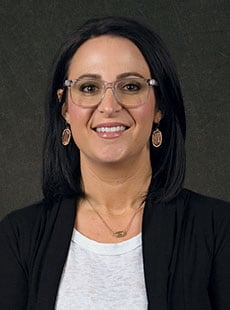 Course Introduction
Course Introduction
Core Standards of the Course
STRAND 1
Body Plan and Organization-Students will explore and describe the body plan, organization, and homeosta-sis.
Standard 1
Contrast the sciences of anatomy and physiology.
Standard 2
Describe the six levels of structural organization of the human body and their interrelationship.
Standard 3
Compare and contrast the types of metabolism:
Standard 4
Identify commonly used planes to divide the body based upon anatomical position.
Standard 5
Apply directional terms used in human anatomy.
Standard 6
Identify the body cavities and locate the following organs within each cavity.
Standard 7
Identify the major organ(s) in each abdominal quadrant.
-
RUQ-right upper quadrant-liver, gallbladder, right kidney
-
RLQ-right lower quadrant-cecum, appendix, right ovary
-
LUQ-left upper quadrant-spleen, stomach, left kidney
-
LLQ-lower left quadrant-left ovary
Standard 8
Examine the effects of stress on homeostasis.
Standard 9
Differentiate between negative and positive feedback mechanisms to maintain homeostasis. Give examples of each.
-
Positive feedback examples: childbirth, breast feeding, blood clotting, etc.
-
Negative feedback examples: blood pressure, blood glucose, thermoregulation, etc.
STRAND 2
Basic Principles of Body Chemistry-Students will explain basic principles of body chemistry.
Standard 1
Review the following terms and concepts.
Standard 2
Identify the four major elements in the body.
Standard 3
Differentiate between:
Standard 4
Describe the characteristics of bonds. (Do not place emphasis on which is the strongest type.)
Standard 5
Analyze ions in a solution (electrolytes) and differentiate between:
Standard 6
Describe the properties of water and how it is utilized in the human body.
Standard 7
Distinguish between:
-
Inorganic compounds-do not contain carbon, small molecules, usually form ionic bonds
-
Organic compounds-usually contain carbon, large molecules, form covalent bonds, flammable
Standard 8
Describe the structures and functions of the following organic compounds and give an example of each:
Standard 9
Define pH and identify the different solutions based on the pH scale.
Standard 10
Describe how the body produces energy during cellular respiration.
STRAND 3
Cells-Students will describe basic structures and functions of cells.
Standard 1
Identify the principle parts of a generalized animal cell and their functions.
Standard 2
Describe a selectively permeable membrane and factors which influence permeability.
Standard 3
Contrast intracellular and extracellular fluid in terms of location and composition.
Standard 4
Describe each of the following cellular transport processes and classify them as active or passive.
Standard 5
Compare and contrast the osmotic effects that occur when a cell is placed in the following solutions:
Standard 6
Compare and contrast:
STRAND 4
Histology & Integumentary System-Students will describe basic structures and functions of histology, and the integumentary system.
Standard 1
Identify and describe the general characteristics and functions of each of the four principle types of tissues.
-
Epithelial-strategies for tissue identification (arrangement & cell shape)
-
Connective-adipose, cartilage, dense fibrous, blood, bone
-
Muscular-skeletal, smooth, cardiac
-
Nervous - neurons, neuroglial cells
Standard 2
Differentiate between the four basic types of membranes.
Standard 3
Identify and describe the structures and functions of the integumentary system components.
Standard 4
Identify the major layers of skin.
Standard 5
Contrast the following:
Standard 6
Explain the following diseases and disorders of the integumentary system.
-
Students will explore careers in healthcare. Students will participate in a minimum of three caree exploration experiences to investigate a variety of health care careers related to therapeutic services, diagnostic services, health informatics, support services, and biomedical research and development pathways. NOTE: Electronically delivered career exploration experiences are permissible.
-
Students will provide an oral and/or written report for each career exploration.
STRAND 5
Skeletal System-Students will describe the structures and functions of the skeletal system and its components.
Standard 1
Describe the general functions of the skeletal system.
Standard 2
Identify the roles of the following in bone growth and ossification:
Standard 3
Identify the four shapes of bones with characteristics and examples of each.
Standard 4
Identify the features of a long bone.
-
Periosteum
-
Diaphysis
-
Epiphysis
-
Medullary cavity
-
Red marrow
-
Yellow marrow
-
Articular cartilage
-
Endosteum
-
Compact bone
-
Spongy bone
Standard 5
Define and locate the following bone markings.
Standard 6
Describe and differentiate between the following terms:
Standard 7
Locate the following bones of the axial and appendicular skeletons.
Standard 8
Contrast the average number, location, and function of each of the five groups of vertebrae.
Standard 9
Explain the structural and functional classifications of articulations.
Standard 10
Differentiate between ligaments and tendons.
Standard 11
Explain the following diseases and disorders of the skeletal system.
-
Herniated disk
-
Osteoarthritis
-
Osteoporosis
-
Scoliosis
-
Kyphosis
-
Lordosis
-
Spina bifida
-
Rheumatoid arthritis (RA)
STRAND 6
Muscular System-Students will describe the structures and functions of the muscular system and its components.
Standard 1
Describe the general functions of the muscular system.
Standard 2
Describe the four characteristics of muscle tissue.
Standard 3
Contrast the general location, microscopic appearance, control, and functions of the three specific types of muscle tissue.
Standard 4
Identify the structures of the sarcomere.
Standard 5
Describe what occurs at the neuromuscular junction.
Standard 6
Describe the sliding-filament model of muscle contraction.
Standard 7
Define the following terms:
Standard 8
Review terms of movement:
Standard 9
Explain the role of the following:
Standard 10
Describe the locations and functions of the following skeletal muscles:
-
Masseter
-
Sternocleidomastoid
-
Trapezius
-
Biceps brachii
-
Triceps brachii
-
Deltoid
-
Diaphragm
-
Pectoralis major
-
Latissimus dorsi
-
Rectus abdominis
-
External oblique
-
Gastrocnemius
-
Tibialis anterior
-
Soleus
-
Hamstrings
-
Quadriceps
-
Gluteus maximus
-
Sartorius
Standard 11
Explain the following diseases and disorders of the muscular system.
-
Fibromyalgia
-
Muscular dystrophy
-
Medial tibial stress syndrome
-
Compare and contrast the following, describe the three degrees of injury:
STRAND 7
Nervous System/Special Senses-Students will describe the structures and functions of the nervous system and special senses.
Standard 1
Describe the three broad functions of the nervous system.
Standard 2
Describe the general organization of the nervous system.
Standard 3
List the functions and structures of neurons and neuroglial cells.
Standard 4
Contrast white and gray matter of nervous tissue.
Standard 5
Identify the structures responsible for the maintenance and protection of the central nervous system.
Standard 6
Describe the location and function of cerebrospinal fluid (CSF).
Standard 7
Identify and describe the structures and functions of the brain.
Standard 8
Sequence the major events when the nerve impulse (action potential) is initiated and transmitted through a neuron. (All or None Principle)
Standard 9
Explain the role of each of the components of a reflex arc.
Standard 10
Explain the following diseases and disorders of the nervous system.
-
Amyotrophic Lateral Sclerosis (ALS)
-
Alzheimer's Disease
-
Bacterial meningitis
-
Cerebral palsy
-
Epilepsy
-
Multiple Sclerosis
-
Guillain-Barre syndrome
-
Parkinson's Disease
-
Cerebrovascular Accident (CVA)-stroke
Standard 11
Identify the principle anatomical structures of the eye.
Standard 12
Identify the principle anatomical structures of the ear.
Standard 13
Identify and describe the principle anatomical structures and functions associated with sense of taste and smell.
Standard 14
Explain the following diseases and disorders associated with special senses.
-
Ametropia-abnormal refracted light
-
Cataracts
-
Conjunctivitis
-
Strabismus
-
Glaucoma
-
Macular degeneration
-
Vertigo
-
Tinnitus
-
Middle ear infection (Otitis Media)
-
Deafness
STRAND 8
ENDOCRINE SYSTEM-Students will describe the structures and functions associated with the endocrine system.
Standard 1
Describe the general functions of the endocrine system.
Standard 2
Describe a "hormone" and how it functions in the body.
Standard 3
Describe the location, secretion, and functions of the major endocrine glands.
-
Hypothalamus
-
Pituitary Gland-found in the hypophyseal fossa "Sella Turcica"
- Anterior Pituitary (adenohypophysis)
- Human Growth Hormone (HGH)
- Targets cells stimulating growth
- Thyroid Stimulating Hormone (TSH)
- Targets thyroid gland
- Adrenocorticotropic Hormone (ACTH)
- Targets adrenal cortex
- Posterior Pituitary (neurohypophysis)
- Antidiuretic Hormone (ADH); also known as vasopressin
- Neural stimulus releases ADH to target kidneys for water retention
- Oxytocin Hormone (OT)
- Neural stimulus releases (OT)to target uterus for child birthing
- Neural stimulus releases (OT)to target breast tissue for milk let down
-
Thyroid Gland-found inferior to the larynx
-
Adrenal Gland-found atop the kidneys
- Adrenal Cortex
- Adrenocorticotropic Hormone (ACTH)
- Stimulates the release of cortisol
- Cortisol
- Coping with long term stress
- Anti-inflammatory by suppressing white blood cells
- Adrenal Medulla-sympathetic stimulus for sustained "Fight or Flight"
- Epinephrine- (adrenaline) - increasing cell metabolism
- Norepinephrine- (noradrenaline) - increasing cell metabolism
-
Pancreas Gland-Exocrine/Endocrine gland in LUQ posterior to the stomach
Standard 4
Explain the following diseases and disorders of the endocrine system.
-
Dwarfism
-
Gigantism
-
Acromegaly
-
Hypothyroidism
-
Hyperthyroidism (Graves' disease)
-
Diabetes mellitus
-
Diabetes insipidus
-
Cushing's syndrome
STRAND 9
Blood-Students will describe the components and functions associated with blood.
Standard 1
Identify and describe the components of blood and their functions.
Standard 2
Describe the process of hemostasis.
Standard 3
Contrast a thrombus and an embolus.
Standard 4
Identify the antigens found on the erythrocytes and the antibodies that determine the ABO blood types and the Rh factor.
Standard 5
Explain the following diseases and disorders associated with the blood.
-
Anemias
-
Nutritional
-
Pernicious
-
Hemorrhagic
-
Hemolytic
-
Sickle cell
-
Aplastic
-
Hemolytic disease of the newborn
-
Hemophilia
-
Leukemia
-
Mononucleosis
-
Polycythemia
STRAND 10
Lymphatic System-Students will describe the structures and functions of the lymphatic system.
Standard 1
Identify the components of the lymphatic system.
Standard 2
Describe how lymph is moved through the body.
Standard 3
Contrast antigens and antibodies.
Standard 4
Describe the general roles of T-cells and B-cells in the immune response.
Standard 5
Distinguish between types of immunity.
Standard 6
Explain the following diseases and disorders associated with the lymphatic system.
STRAND 11
Cardiovascular System-Students will describe the structures and functions of the cardiovascular system.
Standard 1
List the general functions of the cardiovascular system.
Standard 2
Identify the layers of the heart.
Standard 3
Identify the chambers of the heart.
Standard 4
Identify the valves of the heart.
Standard 5
Locate the great blood vessels of the heart.
-
Superior vena cava
-
Inferior vena cava
-
Pulmonary trunk
-
Pulmonary arteries
-
Pulmonary veins
-
Aorta
-
Branches of the aorta
Standard 6
Trace blood flow through the heart.
Standard 7
Contrast pulmonary and systemic circulation.
Standard 8
Identify the components of the conduction system of the heart and trace the pathway.
-
Sinoatrial (SA) node
-
Atrioventricular (AV) node
-
AV bundle (Bundle of His)
-
Bundle branches
-
Purkinje fibers
Standard 9
Sequence the principle events of the cardiac cycle in terms of systole and diastole.
Standard 10
Define cardiac output (CO) and identify factors that influence it.
Standard 11
Compare and contrast the structures and functions of arteries, capillaries, and veins.
Standard 12
Define pulse and identify the general location of arteries where pulse may be felt.
Standard 13
Describe blood pressure and how to measure it.
Standard 14
Describe the following diseases and disorders of the cardiovascular system.
-
Aneurysm
-
Arteriosclerosis
-
Atherosclerosis
-
Cerebrovascular accident/stroke (CVA)
-
Coronary artery disease
-
Hypertension
-
Murmur
-
Myocardial infarction/heart attack (MI)
STRAND 12
Respiratory System-Students will describe the structures and functions associated with the respiratory system.
Standard 1
Describe the general functions of the respiratory system.
Standard 2
Identify and sequence the organs of the respiratory system in the order which air will pass through them from the exterior.
-
Nose/mouth
-
Pharynx
-
Nasopharynx
-
Oropharynx
-
Laryngopharynx
-
Larynx
-
Trachea
-
Bronchi
-
Bronchioles
-
Alveolar duct
-
Alveoli
Standard 3
Identify the following structures associated with the larynx.
-
Epiglottis
-
Glottis
-
Hyoid bone
-
Thyroid cartilage
-
Cricoid cartilage
-
True vocal cords
-
False vocal cords
Standard 4
Identify the coverings of the lungs and the gross anatomical features of the lungs.
Standard 5
Identify the volumes and capacities of air exchanged during ventilation.
Standard 6
Differentiate between the following.
Standard 7
Describe the effects of carbon dioxide on ventilation.
Standard 8
Explain the following diseases and disorders of the respiratory system.
-
Chronic Obstructive Pulmonary Disorder
-
Asthma
-
Influenza
-
Lung cancer
-
Pneumonia
-
Sudden Infant Death Syndrome (SIDS)
-
Tuberculosis (TB)
-
Cystic Fibrosis (CF)
-
Respiratory Syncytial Virus (RSV)
STRAND 13
Digestive System-Students will describe the structures and functions associated with the digestive system.
Standard 1
Describe the general functions of the digestive system.
Standard 2
Contrast chemical and mechanical digestion.
Standard 3
Differentiate between the following.
Standard 4
Describe the functions of saliva and salivary amylase in digestion.
Standard 5
Identify the following parts of a typical tooth.
Standard 6
Define the following.
Standard 7
Identify the anatomical features of the stomach.
Standard 8
Identify the basic components and functions of gastric juice.
Standard 9
Identify the location and digestive functions of the pancreas.
Standard 10
Describe the function of bile (emulsification).
Standard 11
Identify and describe the structures and functions of the three sections of the small intestine.
Standard 12
Identify and describe the structures and functions of the sections of the large intestine.
Standard 13
Explain the following diseases and disorders of the digestive system.
-
Appendicitis
-
Cirrhosis
-
Colorectal cancer
-
Gallstones
-
Hepatitis
-
Obesity
-
Ulcers
-
Celiac disease
-
Crohn's disease
-
Irritable Bowel Syndrome (IBS)
STRAND 14
Urinary System-Students will describe the structures and functions associated with the urinary system.
Standard 1
Describe the general functions of the urinary system.
Standard 2
Identify the four major organs of the urinary system.
Standard 3
Identify the gross anatomy of the kidney
Standard 4
Identify the microscopic structures of the nephron.
Standard 5
Describe the three basic physiological processes and the structures involved in urine formation.
Standard 6
Identify abnormal constituents of urine and possible causes of each.
Standard 7
Describe the methods of fluid intake and output.
Standard 8
Explain the following diseases and disorders associated with the urinary system.
STRAND 15
Reproductive System-Students will describe the structures and functions associated with the reproductive system.
Standard 1
Describe the general functions of the reproductive system.
Standard 2
Identify and describe the structures and functions of the male genitalia.
Standard 3
Describe the functions of testosterone in the male.
Standard 4
Identify and describe the structures and functions of the female reproductive system..
Standard 5
Describe the structures and function of the uterus.
Standard 6
Define the menstrual cycle including the ovarian and uterine cycles and changes that occur during menopause.
Standard 7
Describe the physiological effects of estrogens, progesterone, and relaxin.
Standard 8
Contrast the general outcomes of spermatogenesis vs. oogenesis
Standard 9
Explain the following sequence of events that occur during human development.
Standard 10
Describe the principle events associated with the three stages of labor.
Standard 11
Explain the following diseases and disorders of the reproductive system.
-
Reproductive cancers
-
Endometriosis
-
Impotence
-
Infertility
-
Polycystic Ovarian Syndrome (POS)
-
Sexually Transmitted Infections (STI)
-
Communication
-
Problem Solving
-
Teamwork
-
Critical Thinking
-
Dependability
-
Accountability
-
Legal Requirements/expectations


 UTAH EDUCATION NETWORK
UTAH EDUCATION NETWORK

 Justin
Justin Braxton
Braxton Dani
Dani Rob
Rob Val
Val
